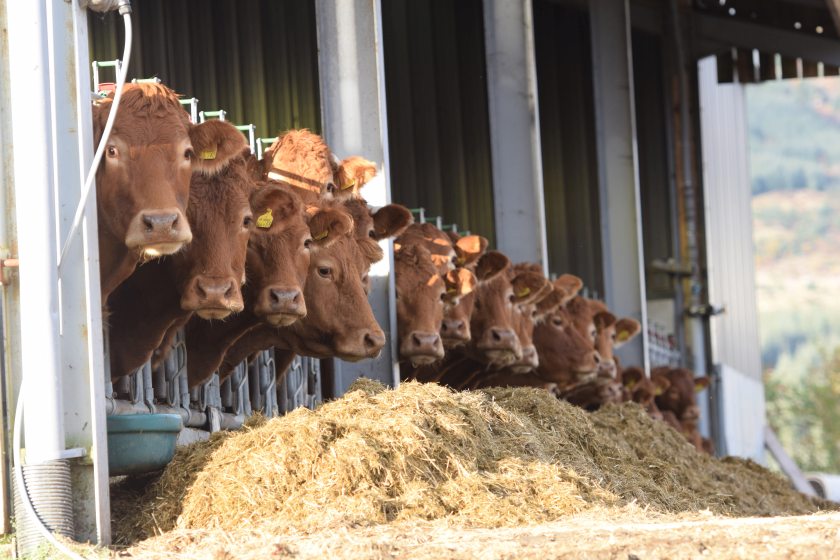
Farmers are being reminded to ensure that livestock presented for slaughter are in a clean and dry condition to ensure maximum financial returns following the cold, wet weather.
The guidance has been issued by Quality Meat Scotland (QMS), which says there are measures for farmers that can be implemented to minimise the contamination.
As the UK experiences market uncertainty due to issues of Brexit and the pandemic, the body says it is important for farmers to avoid any potential deductions to price.
"Cleanliness of cattle at slaughter is influenced by a number of factors including diet, housing, feeding before slaughter and how they are transported," says QMS chair and farmer, Kate Rowell.
"Although livestock farmers across the country face different challenges depending on the housing systems used and their proximity, weather, availability and cost of bedding, there are measures that can be taken to present clean animals and help improve farmers’ bottom-line."
Appropriate and adequate bedding, as well as stocking density, are key to maintaining clean livestock in addition to cleansing and disinfecting trailers and lorries between each haul, she says.
To comply with new export health certificate requirements, onsite veterinarians at processors must be able to certify that livestock trailers and floats have been cleansed and disinfected prior to being loaded with stock.
Dirty stock arriving at processors jeopardise the ability of the onsite vets to make that assurance, she says, which could impact on the marketability of the stock if the animal is ineligible for the EU export market.
In line with Food Standards Scotland’s guidelines, livestock, when presented for slaughter, are categorised on a scale from one to five.
Categories one and two are acceptable for slaughter, and the are rest deemed not in a fit state for processing with clean-up protocols undertaken at the expense of the producer.
Ms Rowell says: “Inevitably some cattle will need to be clipped, which can take a lot of time and labour on farm, but if processors are required to clip livestock, this results in deducted charges for the additional work.
"If clipping cattle on farm, it is important that steps are taken to reduce potential risks to the person doing the clipping,” she adds.
There are a number of steps which can be taken to reduce the risks involved and minimise the stress to livestock, QMS's guidance says.
Cattle should be fully restrained when they are clipped, ideally in a crush with anti-kicking devices and side panels that can be opened.
This prevents the need to stretch across animals, especially in the high-risk areas such as brisket, flanks, belly, legs, knee and hock joints, which will all need particular attention if animals are dirty.
The red meat body adds that well maintained clippers are also a key aspect to safe clipping, as is the use of a circuit breaker.
Ms Rowell says: “Farmers also need to remember that if processors have to trim away meat due to contamination, this reduces carcase weight, and in extreme cases carcase condemnation, and therefore affecting the price paid.
“With this in mind, it’s really important that farmers present, to the best of their ability, clean and dry animal to ensure they get the best possible returns.”
